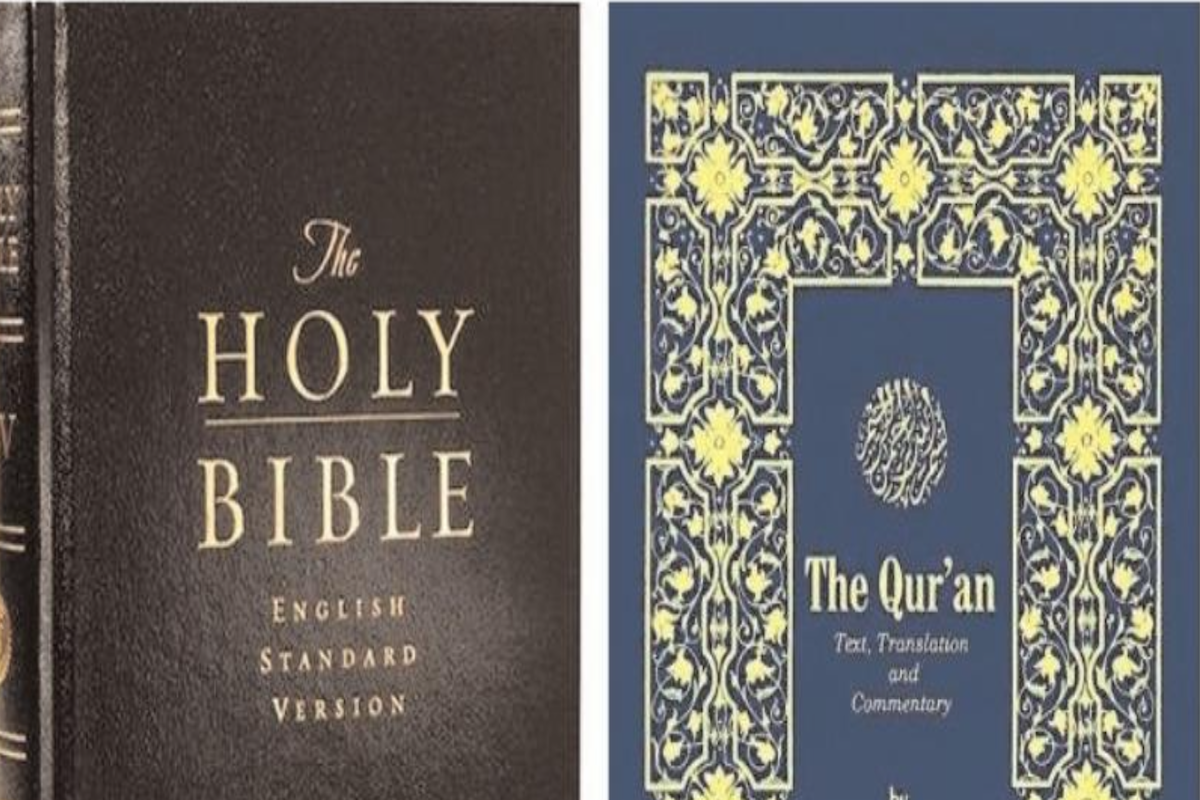The future of this country lies in your hands” – these euphemistically coined words often hit the ears of our school children, who, in turn, squirm uneasily in their seats, and pray that the homily should end. Sermon delivered; the chief guest drives away. The school breathes a sigh of relief and gets on with daily chores. Meanwhile, the country continues to burn ~ a disturbing number of states are constantly on the brink of strife.
Perhaps the biggest tragedy that has befallen the country today is that schools have been reduced to mere curriculum-delivery machines. There is no serious effort to spend quality time and effort in inculcating real values amongst the children entrusted to our care. An index of the seriousness of this situation lies in the fact that the Human Resource Development ministry is planning to introduce chapters from the Vedas in school syllabi. In fact, the Sanskrit verbal root of the Veda can be interpreted variously, but the purpose is finally one. Veda means knowledge.
Advertisement
Any knowledge that one accepts is Veda, for the teachings of the Vedas are the original knowledge. Time and again, it is believed, the Lord assumes the form of preceptor to propagate the Vedic tradition which is also known as Sanatan Dharma. Sanatan Dharma is synonymous with righteousness and the basis for the values of life, both material and spiritual. Vedic mathematics is a system of simple arithmetic which can be used for intricate calculations. It is a historical legacy that belongs to all of humankind. But the problem is that in contemporary situations, the Vedas are regarded as texts that are related to a particular religion.
Ours is a moment of dooms-day prophets. Gandhi’s observation that “the battle of Kurukshetra is in the heart of man” appeared to Vincent Sheean, who regarded the
Mahatma as his only Guru, a very bold statement at that time, but the interpretation has been endorsed by many modern saints whose teachings might be considered too revolutionary to be included in a curriculum to improve “ education in religion”. However, endorsing the NCERT’s syllabi nearly a decade ago claimed that all courses it had developed were aimed at “inculcating a thorough knowledge of love for the country, its rich and long cultural, scientific and spiritual tradition, and a strong sense of unity and togetherness” and the Supreme Court’s observation that “education in religions” is not the same as “religious education” reaffirms our conviction that democracy, socialism and secularism form the basic structure of our Constitution. Religion is a practical code of living. Whether it is the Upanishad or the Bible or the Quran, it provides an exhaustive science of better living, a complete technique of self-development. And, if we consider the aim of education as not merely individualistic which implies the growth of the individual at the cost of society’s interests, the basic concept of religion converges with it. Vivekananda said: “Religion does not consist in dogmas and creeds, temples and church- es, rituals and ceremony…It is realization. It is the manifestation of the divinity in man”.
Schweitzer suggests that the State should aspire to make itself an ethical and spiritual personality. He believes that the wisdom of tomorrow has a different tone from that of yesterday. This means that if the State and society in our country have to cure some of the evils, they must change their outlook and attitudes. There is excessive reliance on the wisdom of yesterday and a lack of faith in the wisdom of tomorrow. In almost every matter of political and constitutional importance, reference is made to the wisdom contained in British legal precedent, without realising that the British have adopted themselves to changing times.
The Government of India, after Independence, appointed the University Education Commission in 1948 headed by Dr S Radhakrishnan, which recommended that in degree courses, lives of great religious figures such as Buddha, Muhammad, Confucius, Zoroaster, Christ, Ramanujan, Nanak and Kabir be taught.
The Secondary Education Commission (1952-55) with Dr A L Mudaliar as its chairman was favourably disposed towards holding an assembly at the commencement of the day’s session with all teachers and pupils present where a denominational prayer is offered. In view of the secularism enshrined in the Constitution, the Commission felt that religious education could not be given in the school except “on a voluntary basis and outside the regular school hours; such instructions should be given to the children of the particular faith and with the consent of the parents and management concerned.”
In 1959, the Central Advisory Board of Education appointed a special Committee on Religious and Moral Instruction with Sri Prakasa as Chairman, which was all for religious and moral instruction in educational institutions.
The Kothari Commission (1964-66) felt the need for education on social, moral and spiritual values, and proposed that a few hours in the timetable may be set apart for religious and moral education as all religions stress certain fundamental qualities of character.
However, the International Commission on the Development of Education (1972) set up by UNESCO did not consider it necessary to recommend religious education in its report Learning to Be, which obviously aims at developing the “complete man”.
As far as the preamble to the Constitution of India is concerned, it solemnly affirms that ours is a secular state, and Article 28 (i) proclaims that no religious instruction shall be provided in any educational institution wholly maintained out of state funds. However, the fact remains
that the basic objective of education is to develop a “complete man” and in an age of moral crisis in the land of spiritual values, it is all the more necessary that our behaviour is guided by ethical considerations. The Mahatma said: “We have left out the teachings of religions in the Wardha Scheme of Education because we are afraid that religions that are taught and practised today lead to conflict rather than unity”. He was conscious of the practical difficulties of introducing religious instruction.
Betrand Russell said in the 1920s that “if they (children) ex- press opinions on religion, politics or morals, they may be met with arguments, provided it is a genuine argument, but not if it is really dogma…the adult should not impose conclusions on them. We cannot prevent our children from thinking us fools merely forbidding them to utter their thoughts; in fact, they are more likely to think ill of us if they dare not say so.”
The warning of Russell might be heeded by those in our country who might be thinking of religious teaching in educational institutions. But the need for moral education cannot be denied.
Values like personal integrity, emotional stability, social commitment, religious understanding beyond mere tolerance, racial and ethnic harmony, humanistic approach, the virtue of sacrifice, compassion and courage and the like should be assiduously cultivated and ingrained among the pupils.
At a higher level, it may be desirable to study the origin, development and philosophy of religion with special reference to the influence of geographical factors and economic conditions. This may include Radhakrishnan’s “idealistic view of life” and Marx’s view that “religion is the opium of the masses”.
It may be important to mention that although morality generally emanates from religious sources, godless morality is also possible. Russell advocated the “Necessity for Atheism”, and men like Huxley and others pointed out the baneful effects of religious beliefs.











